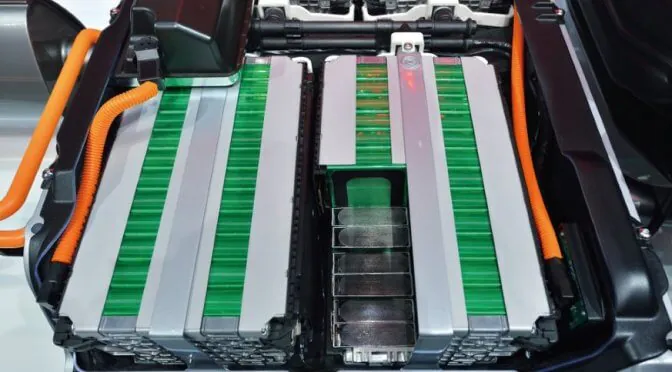The global electric vehicle battery market is experiencing a strong and steady growth, primarily driven by the boom of global hybrids and electric vehicle market over the recent years. In order to further compete with conventional petrol or diesel engine cars in today’s automotive industry, the development of electric vehicle battery technologies has been focusing on making batteries with higher capacity, lighter weight, and shorter charging time. As the global electric vehicle market continues to expand rapidly due to rising concerns for the protection of our environment, the electric vehicle battery market will also be a beneficiary.
Global Electric Vehicle Battery Market Overview
Recent industry data shows that the global electric vehicle sales reached 783,000 units in the first half of 2018 and the total annual sales was estimated to be 2 million units in by the end of 2018. The rise in electric vehicle sales has also led the growth of the electric vehicle (EV) battery market. According to the recent market research from Technavio, the EV battery market size is projected to grow by USD 15.7 billion from 2019 to 2023, with market growth expected to accelerate at a CAGR of nearly 23% by 2023. The Asian-Pacific region is likely to remain as the largest contributor of the global EV battery market in terms of EV battery production and EV battery sales. Most of the world’s top EV battery manufacturers, such as Automotive Energy Supply Corporation, BYD Company Ltd., GS Yuasa International Ltd., LG Chem, Panasonic Corporation, and SAMSUNG SDI CO, are all based in Japan, China and South Korea. Therefore, the dominance of Asia-Pacific in the global electric vehicle battery market is projected to remain over the next few years.
Today, a growing number of the world’s leading automotive companies are already engaging in collaborative partnerships with other manufacturers for developing and manufacturing EV batteries. Next-generation EV batteries are safer compared to lithium-ion batteries, have high charging rates, and low battery leakage risks. Furthermore, several initiatives are being implemented for improving the battery quality and increasing the battery capacity, so that electric vehicles can have longer range to drive. All these advanced initiatives to improve the efficiency of the electric vehicle battery will drive the EV battery market to maintain a strong growth rate through 2023.
Lack of EV Charging Infrastructure vs. Innovative EV Battery Technologies
Although significant developments in EV charging infrastructure has already achieved prominence in the global electric vehicle market, the fewer charging stations compared to gas stations in many regions around the world is still the main challenge faced by the growth of EV battery market. Such a lack of EV charging infrastructure has led to the introduction of new battery cells to reduce battery pack weight, resulting in improvements in energy density, charging time, and thermal performance.
The advances in battery management systems have also contributed towards extending battery life, vehicle range, as well as safety. Prospects of the electric vehicle battery market will be promising, as EV battery manufacturers are also directing their focus towards innovative concepts such as solid-state technology, lithium-air batteries, and alternative metal-ion chemistries.
Additionally, factors including the rising deployment of charging stations, enactment of regulations, provision of financial aids, and mobilization of funding for installations are supporting the development of infrastructure for EVs. Also, owing to the contribution of several key members in the EV value chain, the infrastructure for EVs will continue to grow and develop while leading to considerably high electric vehicle battery sales in the forthcoming years.
Global Electric Vehicle (EV) Battery Market Report 2019-2023
View Technavio’s Global Electric Vehicle (EV) Battery Market Report for more information about this topic. This market research report provides the latest market size and market development for major market segments in terms of product types and regional market landscape. The report contains detailed market trends, market drivers, market challenges and key opportunities. In-depth market analysis such as Porter’s five force model, and comprehensive competitive landscape including detailed profiles of top companies are also included in the report.



